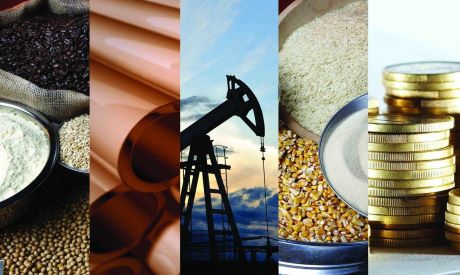To read the full report, please download the PDF above.
Executive summary │ Gas "mega-supply" to end the energy crisis
Quantification of the new equilibrium in global gas markets
Wave of new LNG projects starting in 2025 that ends the energy crisis
Two possible future states from the largest capacity expansion in the history of the global LNG complex
Gas prices to move between previous build-up cycles of oversupply and the marginal cash cost of LNG
Lower-for-longer gas prices will enhance cost competitiveness and be positive for real incomes
Screening for European corporates and utilities
- The energy crisis that began in earnest in 2021 with a tight gas market that was turbocharged by the Russia-Ukraine war, has created an affordability crisis, crystallising de-industrialisation risks across the continent (see here).
- After a multi-year pause, the liquefied natural gas (LNG) supply response – with a characteristic 4-5 years’ time to market – is under construction, and set to accelerate from the beginning of 2025.
- Based on the current project pipeline, this will bring a total 248mtpa of LNG onto global markets by 2028 – led by the US and Qatar – which constitutes ~50% of the 476mpta of current global LNG supply. To put this sheer velocity of additional LNG supply into context, global LNG demand printed at “just” 405mpta in 2023.
- This unprecedented supply quantum – that represents the largest capacity expansion in the history of the global LNG complex – will bring the market back into substantial oversupply, and suggests that the permanent end of the European energy crisis is in sight. This creates two possible future states:
- Steady state 1 – supply is curtailed, via low prices. In this scenario, new capacity is simply too large to be absorbed by consumers, and thus some capacity may not come to market. Given the US constitutes ~40% of all LNG capacity additions to 2030 (with critically less rigid contracts with its offtakers than other large suppliers), the mechanism by which this would take place is predominantly via the cancellation of cargoes from US LNG terminals.
- Steady state 2 – demand absorbs the available supply, again via low prices. In the world of commodities, theory suggests that “supply creates its own demand”. In such a scenario, gas prices will need to fall to a quantum that demand re-emerges. Global liquefaction capacity will expand from 476mpta in 2024 to 623mpta by 2028 (excluding “possible” and “speculative” projects). The utilisation of global liquefaction capacity is usually ~90%, signalling that effective supply additions will likely to be in the order of 132mpta during 2025-28, or ~33mpta for four consecutive years. This raises the question of whether demand can grow by this velocity. History suggests yes. Demand grew this strongly between 2016-20, but for this to happen again, LNG (and TTF) prices would need to be lower-for-longer.
- Both these steady states will materially pressure gas prices to the downside.
- To quantify this, global annual LNG prices were observed in the range of USD4-7/mmBtu (EUR13-22/MWh) during the previous build-up cycles in 2006, 2010, 2016-17 and 2019, close to marginal cash cost economics between USD4-6/mmBtu (EUR13-19/MWh).
- Given this, we expect gas prices to move between the marginal cash cost of LNG and historical periods of build-up cycles to average between USD4-7/mmBtu in the 2025-28 period of “mega-supply”.
- Such gas prices would be back to “normal” levels pre-Ukraine war (in line with the 2010-19 decade), below the coal-to-gas switching price as well as being (very) competitive with other fuels (notably gasoil, high-sulphur fuel oil and LPG).
- Sectors that are set to benefit most from lower gas prices are industrials, utilities and consumers.
- The European de-industrialisation theme has become a growing concern since 2021, predominantly due to a challenging cost environment driven by higher energy prices, regulatory hurdles, a drop in trade with China and heightened competition amid US industrial support through the Inflation Reduction Act (see here and here).
- Whilst lower-for-longer gas prices will not be suffice to alleviate all the challenges faced across the continent, we believe it will enhance Europe’s energy cost competitiveness as well as signal positive real income growth for the European consumer, and thus easing the affordability dimension of the energy trilemma (see here and here).
- Across European corporates, we screen Equinor and TotalEnergies as most exposed to spot gas and LNG prices, respectively. Meanwhile, among utilities, Fortum and Acciona Energia are most exposed to spot power prices, whereas E.ON, Centrica and Enel that comprise a “long customer” position in their supply activities, are the biggest beneficiaries of power price normalisation.



